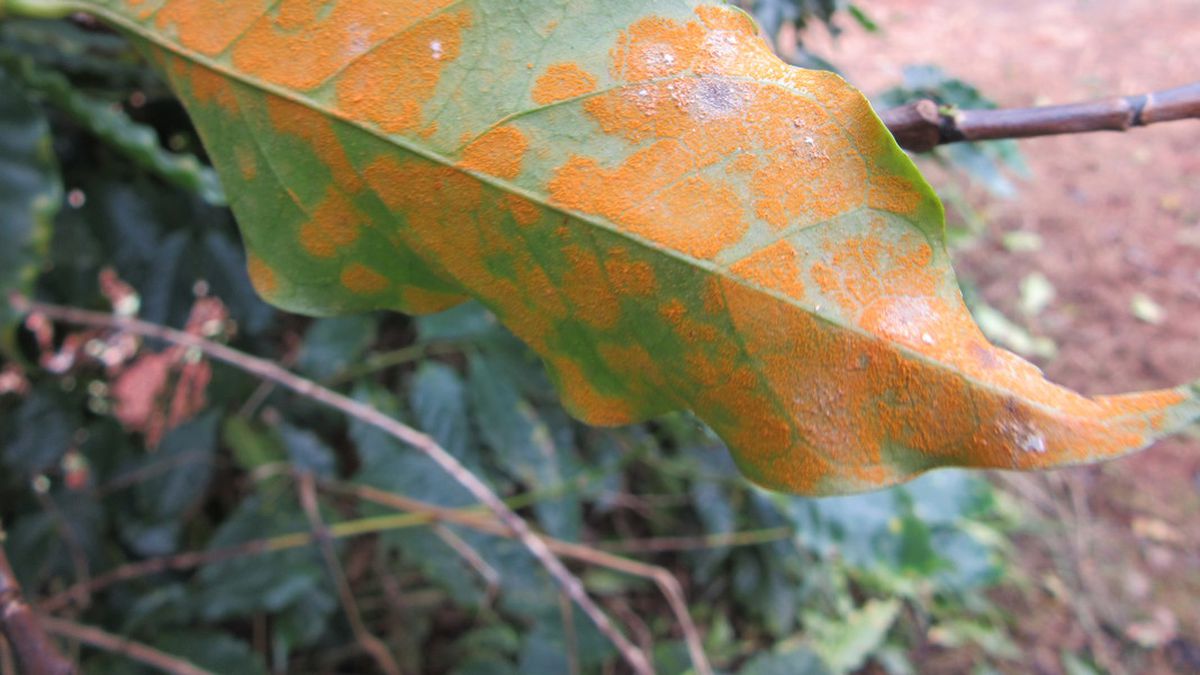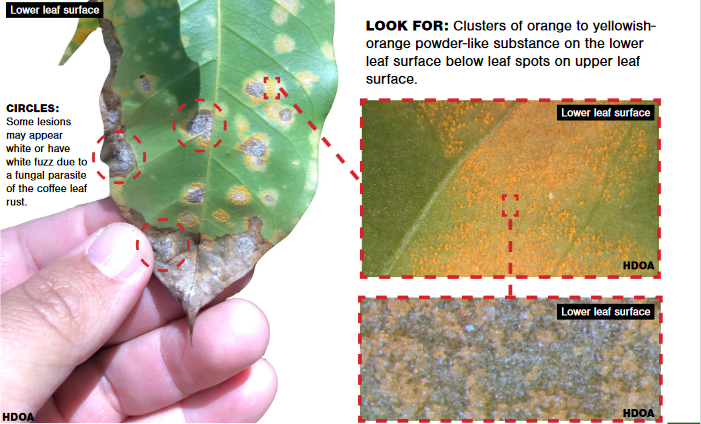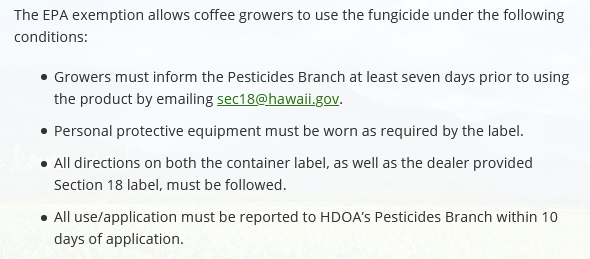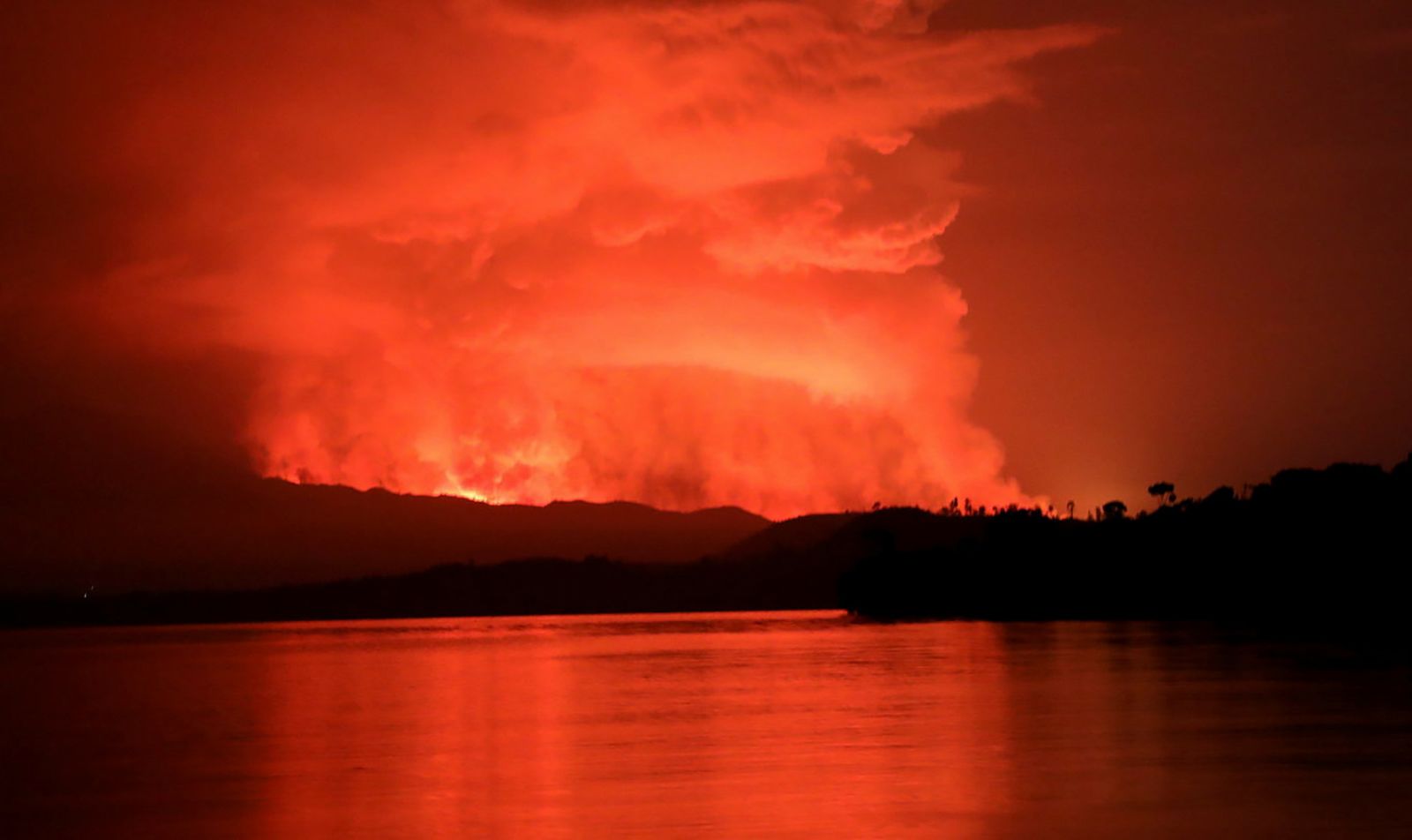Coffee leaf rust may be able to suppress KONA coffee EPA emergency approval of fungicides
Professional coffee knowledge exchange more coffee bean information please follow the coffee workshop (Wechat official account cafe_style)
It has been at least 150 years since coffee leaf rust was discovered, and eight months have passed since it was first detected in Maui, Hawaii, in October 2020. Shortly after that, signs of the disease were also found on the big island of Hawaii in November 2020. The Big Island of Hawaii grows a lot of commercial coffee, including Kona coffee.
Coffee leaf rust spread across the American continent around 2012 and quickly destroyed large tracts of crops. between 2012 and 2017 alone, coffee leaf rust cost coffee growers across Latin America about $3 billion.

Today, the state of Hawaii is in jeopardy, and such losses seem to be looming in Hawaii. According to the Hawaiian Coffee Association, the market value of raw coffee beans is about $102 million in 2019-2020 alone, while the market value of ripe coffee beans is about $148 million.
The Hawaiian Department of Agriculture (HDOA) submitted an application for exemption from the use of chemical antimicrobial agents to the United States Environmental Protection Agency (EPA) in March 2021. On May 20, 2021, local time in the United States, the United States Environmental Protection Agency urgently approved the Hawaiian Department of Agriculture's application.

The chemical antimicrobial agent approved this time is a drug called Priaxor Xemium, which is sold by a German multinational chemical company, and its active ingredient is fluazolamide. Although the Hawaiian Department of Agriculture says the antibacterial agent is commonly used in the production of a variety of leafy vegetables, strawberries, tomatoes, soybeans, wheat and other crops. The United States Environmental Protection Agency has never approved the use of the fungicide on coffee crops before.
Unless antimicrobial agents urgently approved by the US Environmental Protection Agency are granted the right to be used permanently on coffee crops, Hawaiian coffee growers can only be allowed to use them within a year.

According to the emergency exemption, coffee growers must:
Notify the state pesticide department at least 7 days before using Priaxor Xemium.
Wear personal protective equipment as required by the label.
Follow all instructions on the container label and section 18 label provided by the dealer.
Report all uses / applications to the pesticide department within 10 days after use.
For more boutique coffee beans, please add private Qianjie coffee on Wechat. WeChat account: kaixinguoguo0925
Important Notice :
前街咖啡 FrontStreet Coffee has moved to new addredd:
FrontStreet Coffee Address: 315,Donghua East Road,GuangZhou
Tel:020 38364473
- Prev

Information on coffee producing areas in Congo people evacuated from coffee growing areas during volcanic eruptions in Congo
Professional coffee knowledge exchange more coffee bean information Please follow the coffee workshop (Wechat official account cafe_style) We may not be familiar with the country of production of the Democratic Republic of the Congo (DRC). The coffee from this country is thick and mellow, with dark berry tonality and a hint of citrus and spice flavor. Unexpectedly, the Democratic Republic of the Congo (DRC) has recently been known for this matter. May 22nd, bit
- Next

Nestl é admits that most of the products are unhealthy. What is the product mix analysis of Nestl é products?
Nestl é, the world's largest food company, is in trouble again. Several media pointed out that Nestl é admitted that most of its products were unhealthy, and Nestl é admitted in its report that our product portfolio is still poor in terms of external health definition. And take the initiative to admit that most products are unhealthy because they are questioned by the Australian health star rating system. According to the Chinese website of the Financial Times, Nestl é is in a
Related
- What effect does Italian American coffee with filter paper have? Will coffee taste better if it is put on filter paper at the bottom of the powder bowl?
- What is the color difference in coffee beans? What are the characteristics of honey processed coffee beans? Why are the anaerobically treated coffee beans uneven in color?
- How does novice Xiaobai quickly get started and make coffee? Newbies learn to make coffee by hand and share the specific steps and process process!
- Costa tea has a shelf life of 100 years?! Expert: Unable to verify
- It's a huge uproar! American milk addition was rejected by Manner employees?!
- Mocha pot coffee bean recommendations| How fine and how much powder should be used for grinding? What parameter ratios do I need to use to make milk with Mocha pot coffee?
- What are the characteristics of the world's top ten coffee beans treated with Costa Rica honey? How to make black honey kadura from Tarazhu Pilon Processing Plant taste good?
- How to make deep-roasted coffee? What grinding water temperature does authentic Jamaica Blue Mountain No. 1 coffee use to brew it well?
- Selected high-grade rose summer coffee flavor tasting guide Why Panama rose summer has the aroma of flowers and fruits
- What equipment does a novice Xiaobai need to buy to learn to make coffee? Filter cup electronic scale bean grinder manual flushing pot purchase guide

